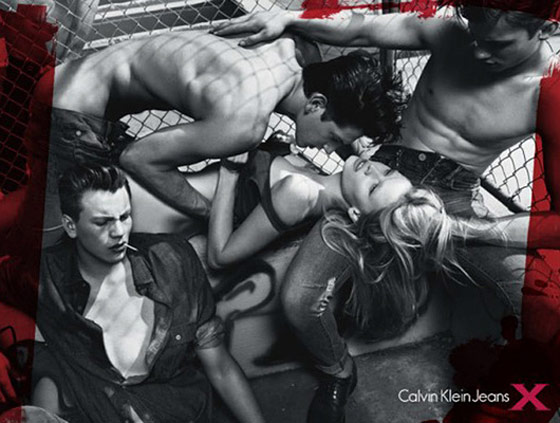Bureau Comes Between Aussies And Their Calvins

The ad in question features the famous model Lara Stone in a structured bralette and jeans, with three-half naked men. Two of the men’s jeans are unbuttoned and one of the men’s shirts is unbuttoned. One is on top of her, one is laying by her side, and one is fondling her hair.
This is a clearly sexual and provocative ad, but to go so far as to say it promotes rape and violence is unfair.
"The Board considered that whilst the act depicted could be consensual, the overall impact and most likely takeout is that the scene is suggestive of violence and rape,’’’ as told to the Heard Sun Austrailia.
The only part of the ad that could suggest violence is the supposed “pulling” of Stone’s hair. First, the man sitting under her looks like he is just touching her head. Second, even if he was pulling her hair, that can be considered to be a normal expression of sexual desire and not a gesture particular to rape.
One could just as easily say that the sexual act depicted in the ad is most likely meant to be consensual although some may find that it is suggestive of rape. The ad is and should be open to interpretation, but the public in general should be able to make its own decision rather than have it made for it by a board. Why is it okay to show a scene of undoubted rape in a film, but not to show a beautiful woman enthralled with three gorgeous men?
"The Board considered that the image was demeaning to women by suggesting that she is a plaything of these men. It also demeans men by implying sexualized violence against women," it said.
Once again, the ad is open to interpretation. To one viewer, the woman looks like she is in pain but to another it looks like she is perfectly comfortable being the center of attention. She does not show any signs of trying to escape the position she is in.
Saying that the ad demeans men is a dramatized opinion and simply does not make sense. In no way does the ad suggest that the men are being violent towards her. The real point of the ad is to assert that she is wanted by not one but three men because she looks so desirable in her Calvin Klein jeans.
Calvin Klein’s ads have always been controversial. Highly sexualized and straight-forward, the brand has brilliantly used nudity to sell jeans for years. Along with the controversy, the ads have become iconic and a symbol of American modernity.
Brooke Shields, only 15 at the time, starred in the iconic “Nothing comes between me and my Calvins” ad in 1980. Back in the 90s, Calvin Klein featured a fully naked super-skinny Kate Moss in his “Obsession” perfume ads. The advertisement caused quite a scandal when they appeared on the sides of buses. Moss was 20 but looked like a child to many of the advertisement’s critics.
What about artistic freedom? Many people see advertisements as art and just as much time and thought go into the concept for an advertisement as a painting.
The black and white ad in question features Stone in a 50s-inspired bra and the men have slicked back hair and cuffed jeans. It looks like what could have been a scene out of “Rebel without a Cause.” The ad is beautifully shot and perfectly arranged. Advertisements have become an art form and what art is not open to interpretation?
One interpretation may be that Stone is being gang-raped and another may be that the advertisement refers to a disenfranchised youth who will do anything just to shock.
The point is, the citizens of Australia should be able to come to a conclusion about the ad on their own and frankly, banning the ad gives it more power than if nothing was ever said about it at all.
The debate about whether the ad implies sexual violence can go on forever but in the end, the ad is ultimately selling a product and trying to get maximum exposure.
The advertising board in Australia has given it just that.
Sign up for Neon Tommy's weekly e-mail newsletter.



